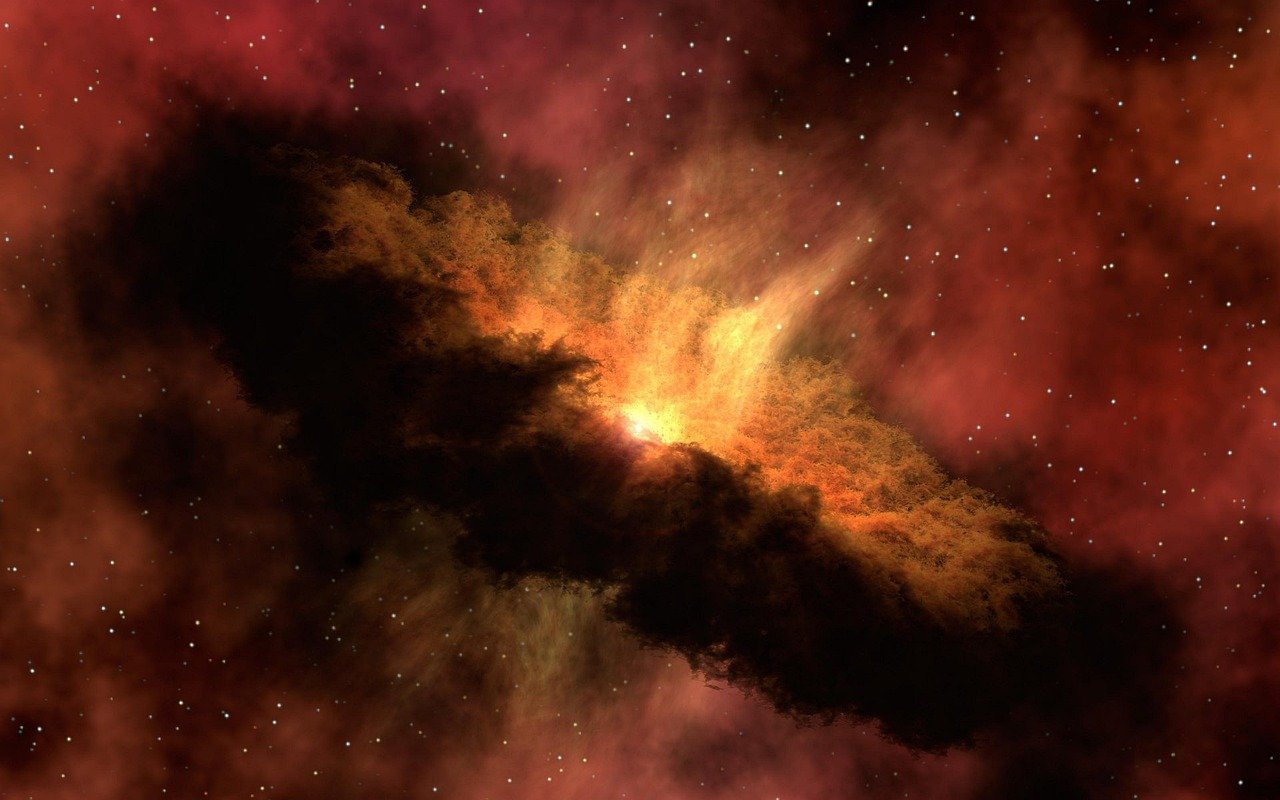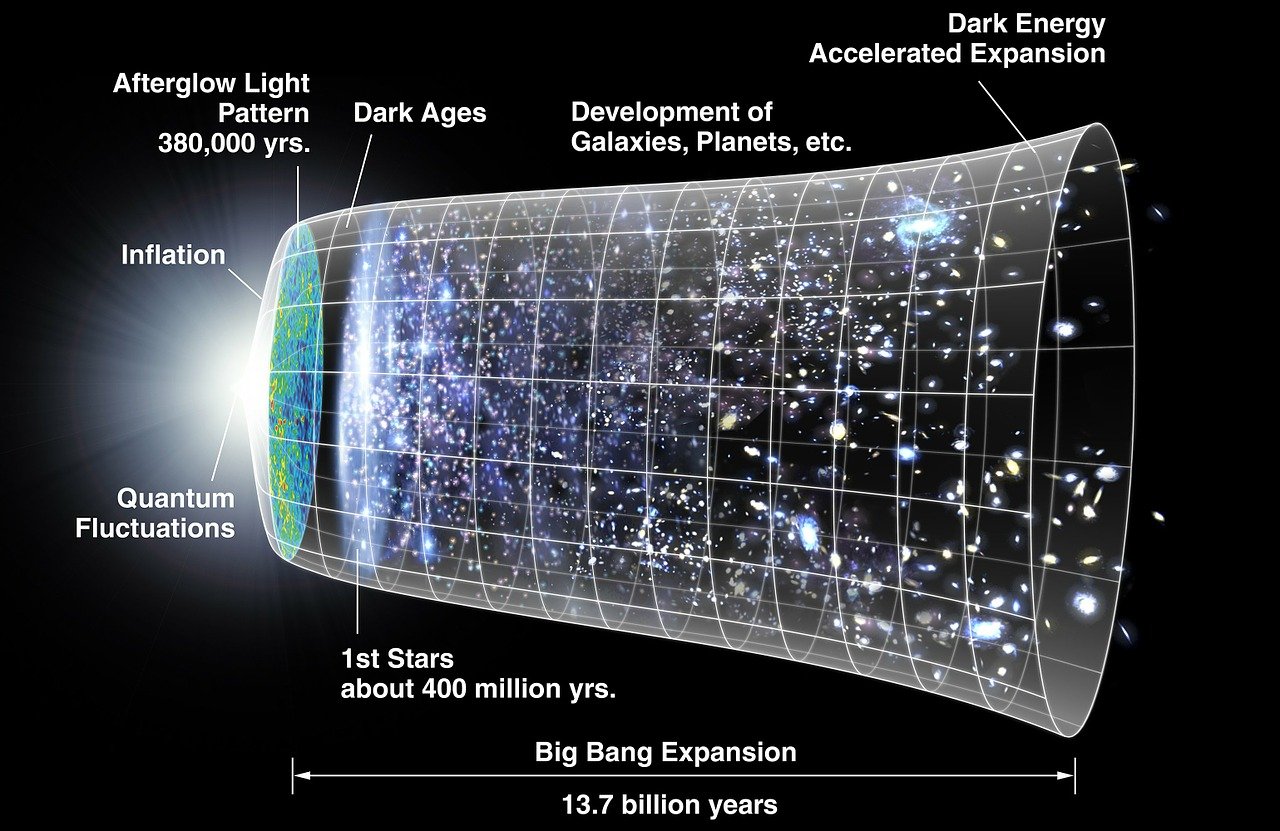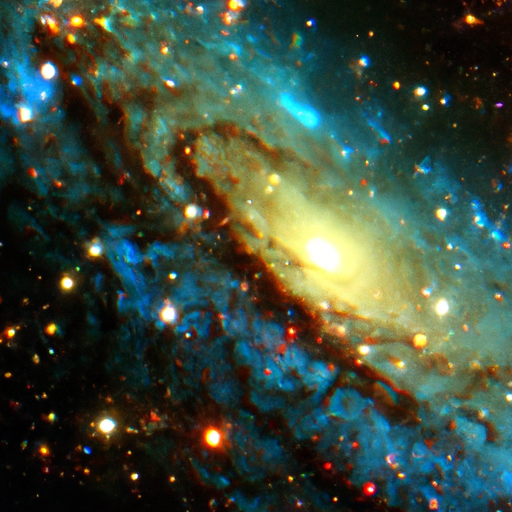In this fascinating article, you will explore the revolutionary concept of the Big Bang Theory and its profound impact on the field of cosmology. By unraveling the mysteries of the universe’s origins, scientists have made remarkable strides in understanding how the universe came into existence and evolved over billions of years. Prepare to be amazed as you delve into the depths of this groundbreaking theory, shedding new light on the wonders of our cosmic origins.

I. Background of Cosmology
A. Introduction to Cosmology
Cosmology is the scientific study of the universe as a whole, including its origin, structure, and evolution. It seeks to understand the most fundamental questions about the universe, such as its age, composition, and the forces and processes that shape it. By examining the cosmos on the largest scales, cosmologists aim to uncover the underlying laws and principles that govern its existence.
B. The Study of the Universe
The study of the universe is an age-old pursuit that can be traced back to ancient civilizations. Early astronomers observed and mapped the celestial bodies in an attempt to explain their movements and interpret their significance. Over time, these observations and theories evolved into the field of cosmology – a scientific discipline dedicated to unraveling the mysteries of the cosmos.
C. Historical Development of Cosmology
The history of cosmology is a fascinating journey that has undergone many notable advancements and transformations. Ancient civilizations, such as the Greeks and Egyptians, proposed various cosmological models to explain the nature and organization of the universe. However, it wasn’t until the 20th century that significant progress was made in understanding the universe’s origin and evolution, thanks to groundbreaking discoveries like the Big Bang Theory.
II. Discovery of the Big Bang Theory
A. Early Observations and Theories
Early observations and theories laid the foundation for the Big Bang Theory. In the early 20th century, astronomers realized that galaxies appeared to be moving away from each other. This led to the development of the concept of an expanding universe, proposing that the universe is not static but rather undergoing constant expansion.
B. Edwin Hubble and the Expanding Universe
One of the key figures in the discovery of the Big Bang Theory was astronomer Edwin Hubble. In the 1920s, Hubble made remarkable observations of distant galaxies that provided further evidence for an expanding universe. He formulated Hubble’s Law, which states that the galaxies’ recession velocity is directly proportional to their distance from us. This observation became a cornerstone in the development of the Big Bang Theory.
C. Discovery of Cosmic Microwave Background Radiation
The discovery of Cosmic Microwave Background (CMB) radiation in 1965 by Arno Penzias and Robert Wilson further solidified the Big Bang Theory. This faint radiation, which permeates the entire universe, is considered the remnants of the initial explosion that gave birth to the universe. Its discovery provided valuable evidence for the early stages of the universe, supporting the concept of a hot, dense beginning known as the Big Bang.
III. Basic Principles of the Big Bang Theory
A. Singularity and the Beginning of Time
According to the Big Bang Theory, the universe originated from a singularity – a point of infinite density and temperature. At the moment of the Big Bang, space, time, and all matter and energy came into existence. This marked the beginning of our universe as we know it, around 13.8 billion years ago.
B. Expansion of Space-Time
The Big Bang Theory suggests that space itself is expanding. As the universe evolved, the space between galaxies and other celestial objects stretched, resulting in the expansion of the universe. This notion is supported by Hubble’s observations of galactic redshift, which provided evidence for the recessional motion of distant galaxies and their increasing separation.
C. Homogeneity and Isotropy
Another key principle of the Big Bang Theory is the assumption of homogeneity and isotropy on the largest scales. This means that the universe, when observed on a large enough scale, appears the same in all directions and is evenly distributed. These observations of cosmic microwave background radiation support the idea that the universe is homogeneous and isotropic, providing evidence for the Big Bang.
IV. Evidences supporting the Big Bang Theory
A. Cosmic Microwave Background Radiation
As mentioned earlier, the discovery of Cosmic Microwave Background (CMB) radiation was a significant breakthrough in supporting the Big Bang Theory. This radiation, detected by Penzias and Wilson, is the afterglow of the initial hot and dense state of the universe. Its uniformity and isotropic nature further confirm the early stages of the Big Bang and serve as strong evidence for the theory’s validity.
B. Abundance of Light Elements
Another important piece of evidence for the Big Bang Theory is the abundance of light elements in the universe. The primordial synthesis of light elements, such as hydrogen and helium, occurred shortly after the Big Bang during a process known as nucleosynthesis. The observed abundance of these elements matches the predictions made by the Big Bang Theory, providing further confirmation.
C. Redshift of Galaxies
Observations of galactic redshift also offer compelling support for the Big Bang Theory. As galaxies move away from us, their light becomes stretched, resulting in a shift towards longer wavelengths. This redshift can be observed in the spectra of distant galaxies and is consistent with the expansion of space-time predicted by the Big Bang Theory.
D. Large-Scale Structure of the Universe
The large-scale structure of the universe, consisting of clusters, superclusters, and vast cosmic filaments, supports the Big Bang Theory. The distribution of matter in the universe appears to be organized in a web-like structure, with galaxies and other cosmic structures clustered together. This observed structure is a result of gravitational interactions over billions of years, consistent with the predictions of the Big Bang Theory.

V. Challenges and Modifications to the Big Bang Theory
A. The Horizon Problem
One of the challenges posed to the Big Bang Theory is the horizon problem. According to the theory, regions of the universe that are currently far apart were in close proximity shortly after the Big Bang. However, the uniformity of the CMB radiation suggests that these regions did not have sufficient time to interact and achieve the observed homogeneity. The solution to this problem lies in the concept of cosmic inflation.
B. The Flatness Problem
The flatness problem is another challenge faced by the Big Bang Theory. It relates to the observed flatness of the universe on a large scale. The theory predicts that the universe’s curvature should change over time, tending towards either a positive or negative curvature. However, measurements indicate that the universe’s curvature is very close to zero, implying an extreme fine-tuning problem. The concept of inflation also provides a possible solution to this puzzle.
C. Inflationary Cosmology
Inflationary cosmology is an extension of the Big Bang Theory that addresses the horizon and flatness problems. It proposes that the universe experienced a rapid expansion phase during the first moments after the Big Bang. This inflationary period resolved the horizon problem by allowing distant regions to come into contact and reach a state of thermal equilibrium. Additionally, it smoothed out the curvature of space-time, explaining the observed flatness.
D. Dark Matter and Dark Energy
The existence of dark matter and dark energy poses further modifications to the Big Bang Theory. Observations of the rotation curves of galaxies and the accelerated expansion of the universe indicate the presence of additional mass and energy, which cannot be accounted for by ordinary matter. Dark matter and dark energy theories have been proposed to explain these observations, highlighting the need for adjustments to the Big Bang Theory.
VI. Implications and Significance of the Big Bang Theory
A. Understanding the Origins of the Universe
The Big Bang Theory offers profound insights into the origins of our universe. It provides a coherent framework for understanding how the universe began, what it is made of, and how it has evolved over billions of years. By studying the universe’s past, cosmologists can shed light on its future and deepen our understanding of the fundamental laws that govern its existence.
B. Supporting the Concept of an Expanding Universe
The concept of an expanding universe, central to the Big Bang Theory, has broad implications for our understanding of the cosmos. It provides a foundation for explaining the observed redshift of galaxies, the large-scale structure of the universe, and the distribution of cosmic microwave background radiation. By accepting the idea of an expanding universe, we can grasp the immense scale and dynamic nature of the cosmos.
C. Formation and Evolution of Galaxies
The Big Bang Theory plays a crucial role in elucidating the formation and evolution of galaxies. It explains how primordial matter and energy gradually came together to form the first galaxies, laying the groundwork for the generations of stars and planetary systems that followed. By studying the processes at work during the early stages of the universe, astronomers can unravel the mysteries of galactic evolution.
D. Predictions and Future of Cosmology
The Big Bang Theory continues to guide the field of cosmology and make predictions about the future of the universe. It predicts that the universe will continue to expand indefinitely, with galaxies moving further apart. Additionally, ongoing research and advancements in technology will likely reveal further insights into the nature of dark matter, dark energy, and the ultimate fate of the universe. The Big Bang Theory serves as a roadmap for future discoveries and advancements in our understanding of the cosmos.

VII. Critiques and Controversies Surrounding the Big Bang Theory
A. Alternative Theories for the Origins of the Universe
The Big Bang Theory is not without its critiques and controversies. Alternative theories, such as the Steady State Theory or the oscillating universe model, have been proposed as possible alternatives to explain the origins and evolution of the universe. These theories challenge the notion of a singular beginning and offer different explanations for the observed phenomena, underscoring the ongoing debates within the field of cosmology.
B. Religious and Philosophical Perspectives
The Big Bang Theory has also encountered some opposition from religious and philosophical perspectives. Some religious groups and individuals interpret the theory as conflicting with their beliefs about the origins of the universe. However, many religious scholars and scientists have found harmony between the Big Bang Theory and their theological views, seeing them as complementary rather than contradictory.
C. Ongoing Research and Debates
The Big Bang Theory remains an active area of research and continues to be refined and tested. Ongoing debates within the scientific community address various aspects of the theory, including the role of inflation, the nature of dark matter and dark energy, and the possibility of alternative explanations. These debates serve to deepen our understanding of the universe and drive scientific progress in cosmology.
VIII. Relationship between the Big Bang Theory and Other Branches of Science
A. Links to Astrophysics and Astronomy
The Big Bang Theory forms a vital connection between cosmology and other branches of science, such as astrophysics and astronomy. The study of the universe’s origin and evolution provides crucial insights into the formation and behavior of stars, galaxies, and other celestial bodies. By understanding the fundamental principles of the Big Bang Theory, astrophysicists and astronomers can unravel the mysteries of the cosmos on a variety of scales.
B. Connection to Particle Physics and Quantum Mechanics
The Big Bang Theory also has implications for particle physics and quantum mechanics. By studying the fundamental particles and forces that emerged during the early stages of the universe, scientists can gain insight into the nature of matter and the laws that govern the microscopic world. The synthesis of cosmology with particle physics and quantum mechanics offers a unified framework for understanding the entire universe.
C. Interdisciplinary Collaborations
The complexity and interconnectedness of the Big Bang Theory require interdisciplinary collaborations between different scientific fields. Cosmologists often work closely with astrophysicists, astronomers, theoretical physicists, and mathematicians to develop a comprehensive understanding of the universe. These collaborations foster scientific advancements and facilitate the exchange of knowledge and ideas.

IX. Popularization of the Big Bang Theory
A. Arthur Eddington and the Scientific Community
The Big Bang Theory has become widely known and accepted within the scientific community and the general public. The efforts of scientists like Arthur Eddington, who popularized the concept and laid the groundwork for its acceptance, played a crucial role in elevating the Big Bang Theory to its current status as the prevailing explanation for the origins of the universe.
B. Media Coverage and Public Opinions
The Big Bang Theory has received extensive media coverage, further popularizing its concepts and ideas. Television shows, documentaries, and popular science books have played a crucial role in spreading knowledge about the theory and sparking public interest in cosmology. While the scientific community generally supports the theory, public opinions may vary due to cultural, religious, or personal beliefs.
C. Influence on Pop Culture and Entertainment
The Big Bang Theory’s impact extends beyond the scientific realm, permeating popular culture and entertainment. It has inspired numerous books, movies, and TV shows that explore the universe’s mysteries and portray scientists’ pursuit of knowledge. The theory’s popularity has contributed to a general fascination with space, science, and the quest to understand the universe.
X. Conclusion
The Big Bang Theory represents a breakthrough in cosmology, providing a comprehensive framework for understanding the origins, evolution, and structure of the universe. Through a combination of observational evidence, theoretical models, and ongoing research, scientists have made tremendous strides in unraveling the mysteries of our cosmic origins. The theory’s principles and predictions continue to shape the field of cosmology and inspire further exploration and discovery. As our understanding of the universe deepens, the Big Bang Theory remains a foundational pillar in our quest to comprehend the vast and intricate cosmos.